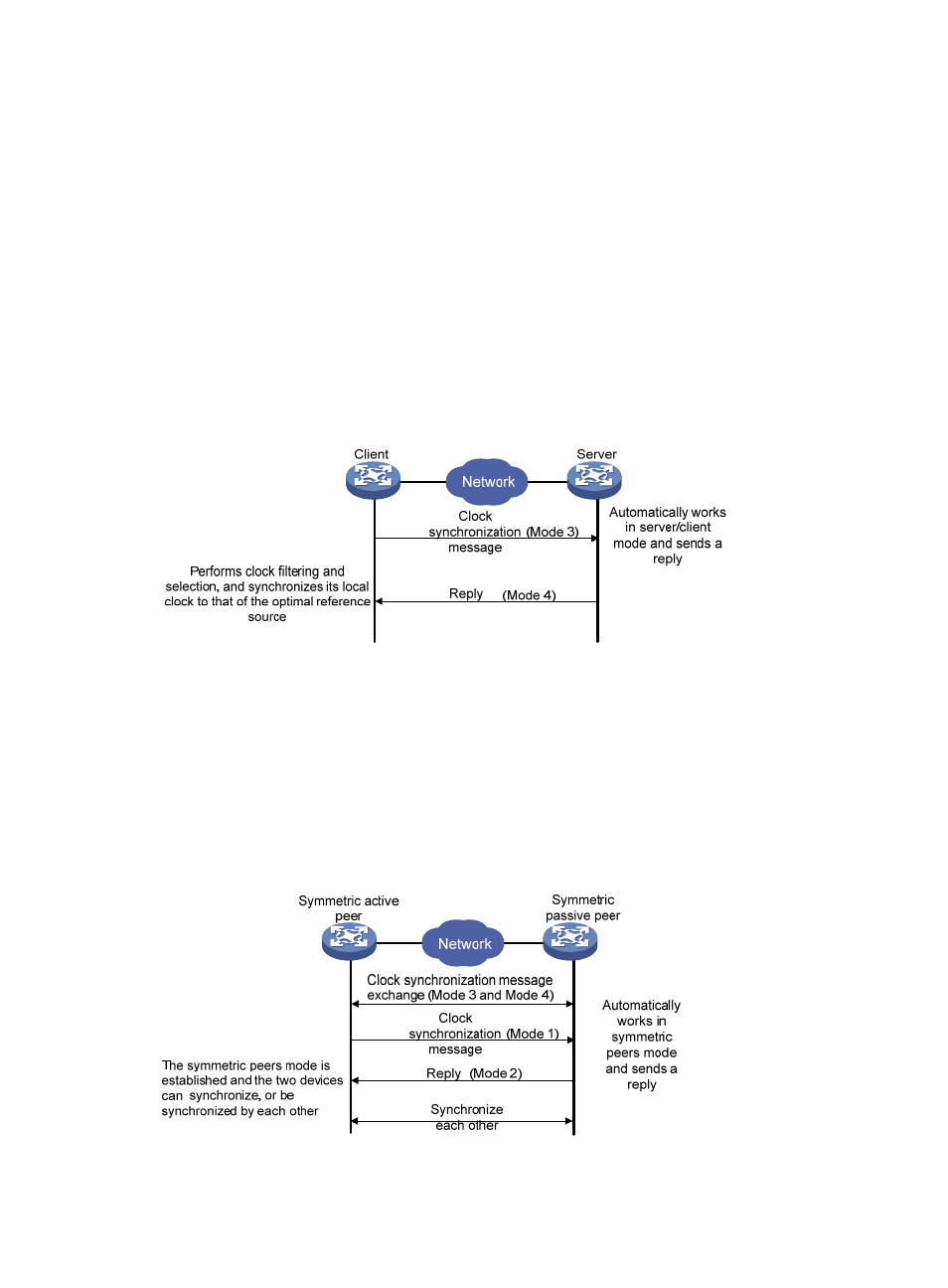Operation modes of ntp, Client/server mode, Symmetric peers mode – H3C Technologies H3C SR8800 User Manual
Page 67

55
Operation modes of NTP
Devices running NTP can implement clock synchronization in one of the following modes:
•
Client/server mode
•
Symmetric peers mode
•
Broadcast mode
•
Multicast mode
You can select operation modes of NTP as needed. In case that the IP address of the NTP server or peer
is unknown and many devices in the network need to be synchronized, you can adopt the broadcast or
multicast mode; while in the client/server and symmetric peers modes, a device is synchronized from the
specified server or peer, and thus clock reliability is enhanced.
Client/server mode
Figure 21 Client/server mode
When working in the client/server mode, a client sends a clock synchronization message to servers, with
the Mode field in the message set to 3 (client mode). Upon receiving the message, the servers
automatically work in the server mode and send a reply, with the Mode field in the messages set to 4
(server mode). Upon receiving the replies from the servers, the client performs clock filtering and selection,
and synchronizes its local clock to that of the optimal reference source.
In this mode, a client can be synchronized to a server, but not vice versa.
Symmetric peers mode
Figure 22 Symmetric peers mode
- H3C SR6600-X H3C SR6600 H3C SecPath F5020 H3C SecPath F5040 H3C VMSG VFW1000 H3C WX3000E Series Wireless Switches H3C WX5500E Series Access Controllers H3C WX3500E Series Access Controllers H3C WX2500E Series Access Controllers H3C WX6000 Series Access Controllers H3C WX5000 Series Access Controllers H3C LSWM1WCM10 Access Controller Module H3C LSUM3WCMD0 Access Controller Module H3C LSUM1WCME0 Access Controller Module H3C LSWM1WCM20 Access Controller Module H3C LSQM1WCMB0 Access Controller Module H3C LSRM1WCM2A1 Access Controller Module H3C LSBM1WCM2A0 Access Controller Module
